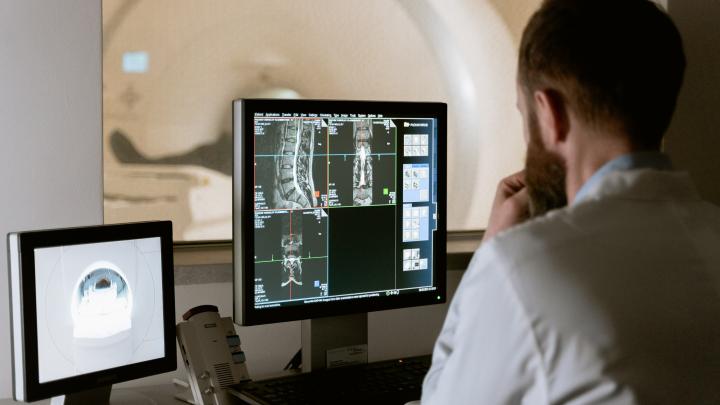DORA is in effect! Download the Cheat Sheet Now.
Can You Accelerate Data Platform Modernization in the Healthcare Industry ?

Healthcare is an industry that is heavily reliant on data. Data platforms in healthcare play a crucial role in storing, processing, and analyzing patient data, clinical research data, financial data, and administrative data. With the rise of big data, healthcare organizations are recognizing the need to modernize their data platforms to keep pace with technological advancements, regulatory requirements, and changing patient expectations. However, data platform modernization can be a complex and time-consuming process. This white paper outlines the steps healthcare organizations can take to accelerate their data platform modernization efforts.
Data platform modernization in healthcare is not without its challenges. Some of the key challenges that healthcare organizations face include:
-
Legacy Systems: Many healthcare organizations still rely on legacy systems that are outdated and incompatible with modern technologies.
-
Data Security: Healthcare data is highly sensitive and subject to regulatory compliance. Therefore, data platform modernization efforts must take into account data security requirements.
-
Data Integration: Healthcare organizations have to integrate data from various sources, including electronic health records (EHRs), medical imaging systems, and billing systems. Integrating these disparate data sources can be challenging.
-
Cost: Data platform modernization can be expensive, and healthcare organizations must ensure that they can achieve a return on investment (ROI).
-
Business Relationship Management Complexity: The cost, timelines, and often competing agendas make such initiatives prone to failure if the Business Relationship Management and Organizational Change Management functions are merely afterthoughts.
To accelerate data platform modernization in healthcare, organizations can follow these steps:
-
Define the Vision and Strategy: Healthcare organizations should define their vision and strategy for data platform modernization. This includes identifying the business drivers for modernization, setting goals, and defining the scope of the modernization effort.
-
Assess Current State: Healthcare organizations should conduct an assessment of their current data platform to identify gaps and areas for improvement. This includes evaluating data governance, data architecture, data quality, and data security.
-
Define the Target State: Based on the vision and strategy, healthcare organizations should define the target state for their modernized data platform. This includes defining the data architecture, selecting the right technology stack, and establishing data governance processes.
-
Prioritize Modernization Efforts: Healthcare organizations should prioritize their modernization efforts based on business value, technical complexity, and risk. This will help them focus their efforts and allocate resources efficiently.
-
Build a Business Case: Healthcare organizations should build a business case for data platform modernization that includes an ROI analysis, cost-benefit analysis, and risk assessment.
-
Adopt a Data-First Approach: Healthcare organizations should adopt a data-first approach to modernization. This means prioritizing data quality, data governance, and data integration as key success factors.
-
Leverage Cloud-Based Technologies: Cloud-based technologies offer scalability, flexibility, and cost savings. Healthcare organizations should leverage cloud-based technologies to accelerate their data platform modernization efforts.
-
Implement Agile Development: Agile development methodologies allow healthcare organizations to rapidly develop and deploy new features and functionality. This can help accelerate data platform modernization efforts.
-
Governance, Business Relationship Management and Organizational Change management should be their own workstreams with adequate headcount to perform those functions.
-
Consider vendor partners that can accelerate your journey: The market landscape is constantly evolving with vendor offerings specific to payer, providers and other healthcare entities. Abacus for example provides a close to turn key data platform for the payer space. Carefully leveraging such a vendor partnership can reduce time, cost and risk significantly while lowering technical debt incursion.
Business relationship management (BRM) is often underserved, and is a critical aspect of healthcare data platform modernization projects. In this context, BRM refers to the process of establishing and maintaining strong relationships between the project team and key stakeholders, such as healthcare providers, payers, patients, and other relevant organizations. The goal is to ensure that the project is aligned with the business objectives of these stakeholders and that their needs are met throughout the project lifecycle.
Here are some key considerations for effective BRM in healthcare data platform modernization projects:
-
Identify key stakeholders: Identify the stakeholders who will be impacted by the project and prioritize them based on their level of influence and interest.
-
Understand stakeholder needs: Conduct a thorough analysis of stakeholder needs, goals, and objectives to ensure that the project aligns with their business priorities.
-
Develop a communication plan: Develop a comprehensive communication plan that outlines how the project team will engage with stakeholders throughout the project lifecycle. The plan should include regular updates, status reports, and other relevant communications.
-
Establish trust: Build trust with stakeholders by being transparent, responsive, and proactive in addressing their concerns and feedback.
-
Align project goals with business objectives: Ensure that the project goals and objectives are aligned with the business objectives of the stakeholders. This can be achieved through regular stakeholder engagement and feedback.
-
Continuously monitor and evaluate: Continuously monitor and evaluate the project to ensure that it is meeting the needs of stakeholders and delivering the expected business value.
By implementing effective BRM practices in healthcare data platform modernization projects, organizations can improve stakeholder satisfaction, increase project success rates, and maximize the return on investment.
In the healthcare industry, data platform modernization is crucial to providing efficient patient care, managing healthcare costs, and improving outcomes. However, modernizing healthcare data platforms can be challenging, especially when it comes to managing large data volumes, ensuring data security and privacy, and complying with regulatory requirements.
One way to accelerate and de-risk healthcare data platform modernization initiatives is by considering vendor partnerships. A vendor partnership is a strategic relationship between healthcare organizations and vendors that offer data platform modernization solutions and services.
Here are some ways vendor partnerships can help accelerate and de-risk data platform modernization initiatives in the healthcare industry:
-
Access to expertise: Healthcare organizations often lack the in-house expertise required to modernize data platforms effectively. By partnering with vendors, they can tap into the expertise of data platform modernization specialists, including data architects, data scientists, and data engineers. These experts can help healthcare organizations understand their current data architecture, identify areas for improvement, and develop a roadmap for modernization.
-
Reduced implementation time: Implementing data platform modernization initiatives can be time-consuming, with many healthcare organizations taking several months or even years to complete the process. Vendor partnerships can help accelerate implementation by providing access to pre-built solutions and platforms that can be customized to meet the specific needs of healthcare organizations. These pre-built solutions can reduce the time required for implementation, allowing healthcare organizations to realize the benefits of modernization sooner.
-
Risk reduction: Healthcare organizations face many risks when it comes to data platform modernization, including data loss, security breaches, and regulatory non-compliance. Vendor partnerships can help mitigate these risks by providing access to solutions and services that have been thoroughly tested and validated. Vendors can also help healthcare organizations stay up-to-date with regulatory requirements and ensure that their data platform modernization initiatives comply with relevant laws and regulations.
-
Cost savings: Data platform modernization initiatives can be expensive, with many healthcare organizations struggling to allocate the necessary resources to complete the process. Vendor partnerships can help reduce costs by providing access to cost-effective solutions and services. Vendors can also help healthcare organizations identify areas where they can save money by optimizing their data platform infrastructure and reducing data storage costs.
-
Improved scalability: As healthcare organizations grow and their data needs change, they need data platforms that can scale to meet their evolving needs. Vendor partnerships can help healthcare organizations build scalable data platforms that can handle increasing data volumes and provide the performance required to support critical healthcare operations.
Vendor partnerships can play a significant role in accelerating and de-risking healthcare data platform modernization initiatives. By leveraging the expertise, solutions, and services provided by vendors, healthcare organizations can reduce implementation time, mitigate risks, save costs, and build scalable data platforms that can support their evolving needs.
Data platform modernization is essential for healthcare organizations to keep pace with technological advancements, regulatory requirements, and changing patient expectations. While the process can be complex and time-consuming, healthcare organizations can accelerate their modernization efforts by following these steps: defining the vision and strategy, assessing the current state, defining the target state, prioritizing modernization efforts, building a business case, adopting a data-first approach, leveraging cloud-based technologies, implementing agile development, and maturing BRM and OCM as core capabilities. By doing so, healthcare organizations can achieve a modernized data platform that delivers value to patients, clinicians, and administrators alike.


